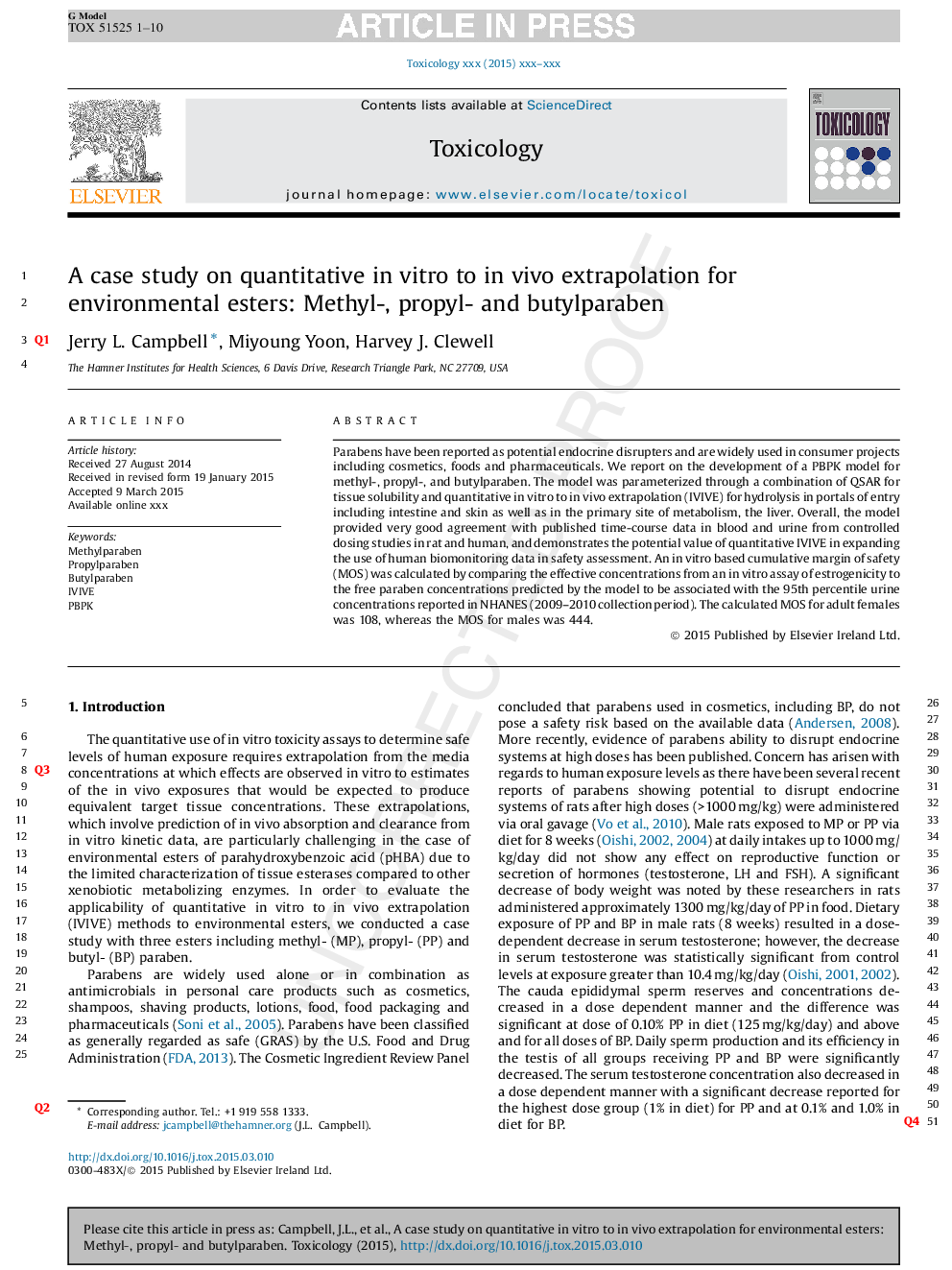| Article ID | Journal | Published Year | Pages | File Type |
|---|---|---|---|---|
| 5859091 | Toxicology | 2015 | 10 Pages |
Abstract
Parabens have been reported as potential endocrine disrupters and are widely used in consumer projects including cosmetics, foods and pharmaceuticals. We report on the development of a PBPK model for methyl-, propyl-, and butylparaben. The model was parameterized through a combination of QSAR for tissue solubility and quantitative in vitro to in vivo extrapolation (IVIVE) for hydrolysis in portals of entry including intestine and skin as well as in the primary site of metabolism, the liver. Overall, the model provided very good agreement with published time-course data in blood and urine from controlled dosing studies in rat and human, and demonstrates the potential value of quantitative IVIVE in expanding the use of human biomonitoring data in safety assessment. An in vitro based cumulative margin of safety (MOS) was calculated by comparing the effective concentrations from an in vitro assay of estrogenicity to the free paraben concentrations predicted by the model to be associated with the 95th percentile urine concentrations reported in NHANES (2009-2010 collection period). The calculated MOS for adult females was 108, whereas the MOS for males was 444.
Related Topics
Life Sciences
Environmental Science
Health, Toxicology and Mutagenesis
Authors
Jerry L. Campbell, Miyoung Yoon, Harvey J. Clewell,
